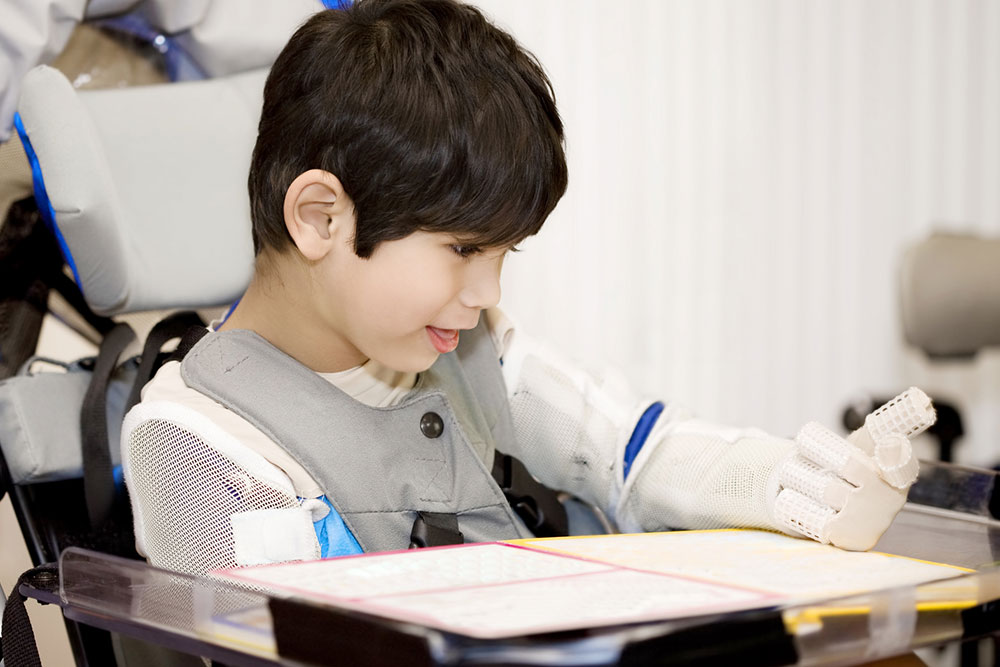Cerebral Palsy – Symptoms and Management Options
Cerebral palsy occurs when certain brain areas are damaged or develop abnormally. The disorder leads to various symptoms, such as uncontrollable movements, trouble maintaining posture, poor motor skills, and difficulty walking and balancing. These symptoms usually appear during infancy or childhood and make it hard to perform everyday tasks. Recognizing the signs early and seeking the guidance of a healthcare expert without delay are key steps toward managing cerebral palsy better.

Common signs
The early signs of cerebral palsy may vary from person to person and may affect a different part or function of the body. But generally, the following signs are most commonly associated with the condition:
Stiff muscles: Experiencing stiffness in the muscles is one of the most common signs of cerebral palsy. Heightened reflexes can sometimes accompany this symptom. If the muscles in the arms and legs are affected, one can find it difficult to bend their limbs and carry out daily tasks.
Tremors: Another common sign of cerebral palsy is involuntary, jerky movements called tremors. The tremors can develop in one part of the body, one side, or throughout the body.
Trouble walking: Those with cerebral palsy may experience difficulty walking and may walk by crossing their knees or with a wide gait. They may also crouch while walking or walk on their toes. Cerebral palsy can also make them favor one side of their body. So this means they seem to walk with just one leg while dragging the other leg.
Issues maintaining balance: Cerebral palsy can also cause trouble with muscle coordination and maintaining balance, making it difficult to move.
Poor fine motor skills: Issues with fine motor skills are among the early symptoms of cerebral palsy. Because of this, one may find it difficult to open and close shirt buttons, pick up objects, and even write.
Speech issues: Cerebral palsy can also lead to delays in speech development in children. Further, those affected may have trouble speaking.
Trouble eating: As cerebral palsy affects muscle movement, those affected might find it difficult to chew and swallow food.
Developmental delays: Children with cerebral palsy may reach certain developmental milestones later than those without. For instance, cerebral palsy makes motor skills develop slower, so children with the disorder may take longer to learn how to sit up by themselves or crawl. Cognitive delays may also be a sign of the disorder in children.
Vision problems: Damage to the brain can contribute to symptoms like difficulty moving the eyes, seeing clearly, and even hearing issues.
Seizures: Some children with cerebral palsy may also be diagnosed with epilepsy—a condition that causes seizures.
One should consult a doctor upon noticing any of these 10 common cerebral palsy signs and seek prompt treatment.
Management options
While cerebral palsy does not have a cure, various treatment options can help in managing its symptoms. A treatment plan for cerebral palsy is usually developed by various healthcare professionals from different fields to address the different concerns associated with the condition. For instance, for those with seizures, a neurologist may prescribe certain treatment options, whereas speech issues could be addressed by a speech therapist. Here is a detailed look at some of the common cerebral palsy treatments:
Prescription treatment: This option can help relieve muscle spasms, seizures, and muscle discomfort associated with cerebral palsy.
Occupational therapy: Occupational therapy and physical therapy can help those with cerebral palsy develop and improve strength and mobility. This treatment option can also help in the development of fine motor skills to help those affected perform daily tasks.
Speech therapy: This option can help those with cerebral palsy overcome speech issues and communicate better.
Surgery: Surgical procedures can correct joint and spine problems, reduce muscle spasms, or help consistently deliver prescription treatment. Surgery may also be required to implant electrical brain stimulators to improve brain activity.
In addition to treatment, home remedies for cerebral palsy can help in relieving symptoms and improving overall health. Here are some common options to consider:
Exercise and yoga: Cerebral palsy can limit mobility. Long periods of immobility can affect blood circulation in the body. So, it is important to keep the body moving. This is where exercise comes in. Certain physical activities can help strengthen the muscles and improve mobility when dealing with cerebral palsy. Similarly, yoga can also help strengthen and stretch the muscles. Further, regular physical activity ensures good blood circulation and prevents health issues associated with a sedentary lifestyle.
Epsom salt baths: Cerebral palsy can cause pain and inflammation. Epsom salt baths can help relieve this symptom. All one has to do is mix Epsom salt in warm bathwater and soak in it for a while.
Cold and hot compresses: Using ice packs, heating pads, or warm compresses can help alleviate the pain associated with cerebral palsy.
To get appropriate care when dealing with cerebral palsy, it is important to consult a doctor before starting with any remedy or treatment.











